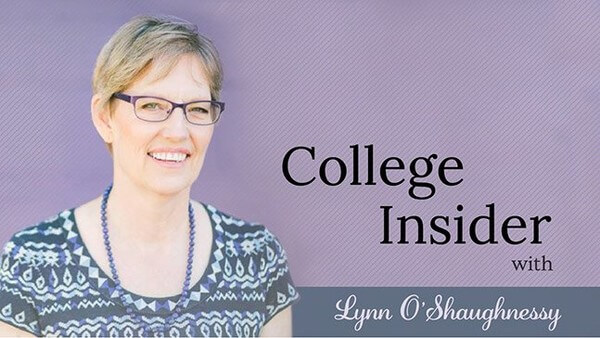6 Ways to Boost Your Financial Aid Offers

How colleges hand out money can seem perplexing, but if you understand what motivates colleges and appreciate that they are indeed businesses, you will understand better how to attract more generous packages. To get you started, here are six things that you need to know about how to boost your chances of getting a great financial aid award:
Tip No. 1: Understand Which Colleges Give the Best Awards
All colleges and universities provide financial aid packages to students who demonstrate that they need financial help. The most elite colleges, however, typically provide the most generous awards. These institutions can often afford to do this because many of their undergrads are high-income and are charged full price.
Less than six dozen colleges say they meet 100% of the financial need of all or many of their students. Here is a sampling of these institutions:
- Brown University
- Claremont McKenna College
- Davidson College
- Duke University
- Haverford College
- Johns Hopkins University
- Princeton University
- Reed College
- Rice University
- Skidmore College
- Stanford University
- Tufts University
- Union College
- University of Chicago
Tip No. 2: Being Smart Doesn't Guarantee Top Awards
You can be the smartest teenager in your class, but that doesn’t guarantee a superior award. You need to target the right colleges. Here’s an example:
Jeremy, my son’s best friend in high school, was a brilliant student who needed a tremendous amount of financial help. His parents divorced and his dad’s small graphic design business went bust.
I told Jeremy’s parents that to get the best deal possible, their son should apply to colleges with excellent financial aid. Jeremy applied to highly selective institutions like Carleton College, Washington University in St. Louis, Grinnell College and Colgate University, which all said they met 100% of his financial need. He also applied to a West Coast university that his girlfriend wanted to attend even though I warned him that it had a history of dispensing poor awards.
The packages that Jeremy received from all the colleges that I recommended provided excellent financial aid awards. In contrast, the college that his girlfriend liked provided an award that was worth roughly $25,000 less a year. Jeremy ended up attending Carleton (current price tag $66,490) where his out-of-pocket costs were roughly $4,000 a year.
Tip No. 3: Look for Colleges That Aren't as Hard to Crack
While the most highly selective colleges provide the most generous financial aid packages, most students won’t have a chance of getting accepted into them. Students should search for colleges that provide as good a financial aid package as possible where they have a realistic chance of getting accepted. Here’s an example:
St. Olaf College, an excellent liberal arts college in Minnesota, typically meets 99% of its undergraduates financial need. What’s more, 90% of its undergraduates get their full financial need met.
The acceptance rate at St. Olaf’s is 36%, but that’s better than a college like Harvard where the acceptance rate is just 6%. Sure, St. Olaf’s award will probably not be quite as generous as Harvard’s, but that won’t matter if you can’t get into the Ivy League university.
Tip No. 4: Check the Generosity Statistics
You can generate your own financial aid statistics by heading to the College Board’s website. Here’s what you need to do:
- Type in the name of any institution in the search box
- Once you’ve pulled up the college’s profile, click on the "Paying" tab
- At the top of the page, click on "Financial Aid by the Numbers"
I’m using Pomona College as an example of the key figures that you should be looking at. At the top of the page, you’ll see that Pomona College says that it meets 100% of its undergraduates’ financial need. That’s incredibly good news for students needing financial aid.
In contrast, I checked out an art college on the East Coast that typically only meets 67% of an undergrad’s financial need and the average award is just $24,005. What’s more, only three percent of students get their full financial needs met.
Tip No. 5: Understand What State Universities Offer
While state universities routinely give awards to non-residents, the awards are almost always merit scholarships and not need-based financial aid. Public universities also charge much higher tuition to out-of-state students for the same reason.
Check what financial aid you might qualify for, if you attend a public university in your own state. You can find out what your state aid programs are by visiting the website of the National Association of Student Financial Aid Administrators.
Tip No. 6: Don’t Accept the First Financial Aid Offer
Most college admission officers worry each year that they won’t fill their freshmen slots. The latest annual Gallup survey of admission administrators conducted for Inside Higher Ed indicates that many colleges and universities are not attracting as many freshmen as they’d like.
Here are the percentages of colleges that didn’t meet their freshmen admission goals for the latest completed admission season:
- Public research universities: 38%
- Public master’s level universities: 59%
- Private research universities: 56%
- Private colleges: 70%
With many institutions failing to attract as many applicants as they’d like, this represents an opportunity for you to squeeze more financial aid out of an individual college. If your aid award is underwhelming, you can always appeal a financial aid offer.
Lynn O’Shaughnessy is a best-selling author, speaker and journalist. Her book, The College Solution: A Guide for Everyone Looking for the Right School at the Right Price, is available on Amazon.com.